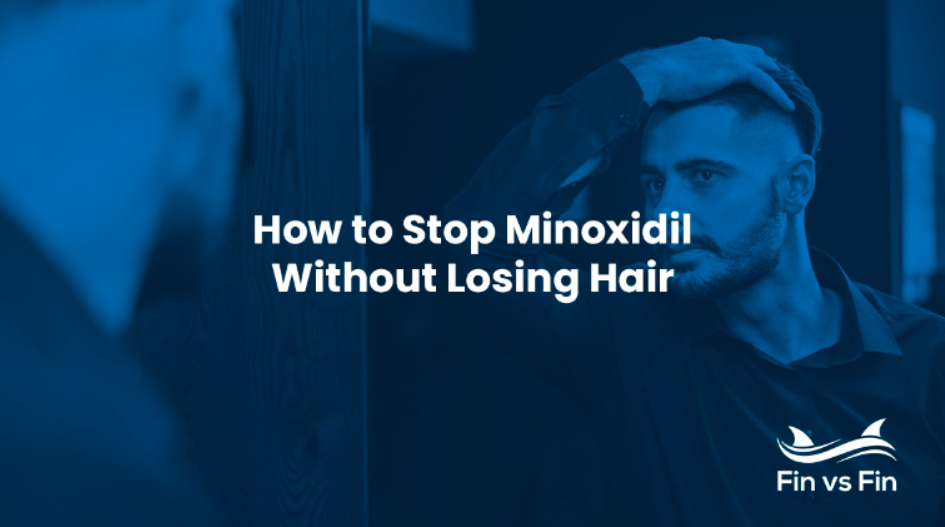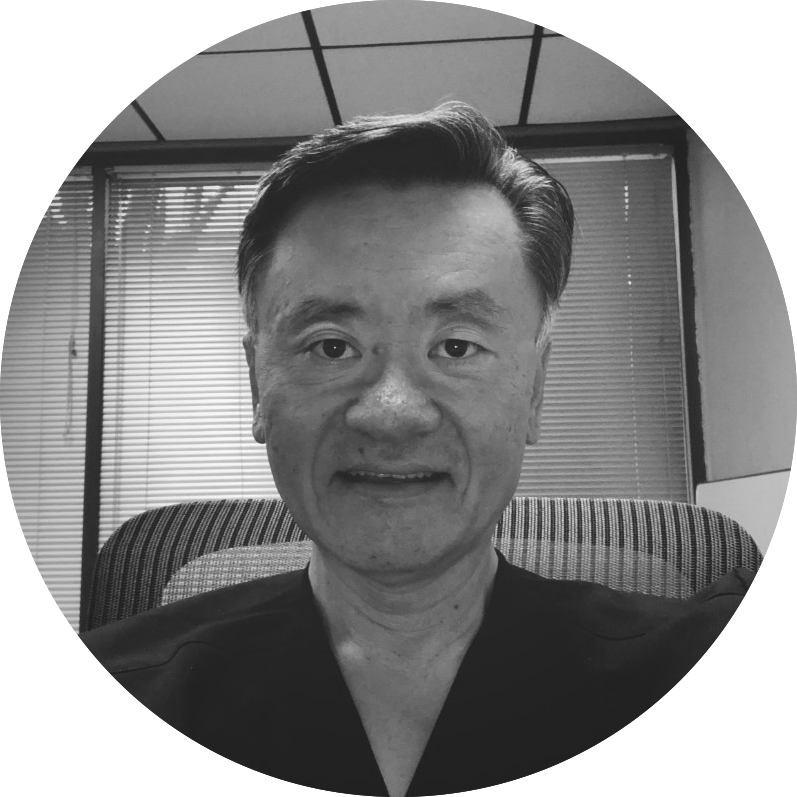- Taper off minoxidil gradually instead of stopping abruptly to minimize potential hair shedding.
- Consider finding an alternative hair loss treatment, such as finasteride, hair supplements, and low-level laser therapy if you are still experiencing hair loss after discontinuing minoxidil.
- Consult with a healthcare professional for personalized guidance before stopping minoxidil.
If you’re considering stopping minoxidil, it’s essential to taper off gradually rather than discontinuing it abruptly to reduce hair shedding. In addition, you may need to find another effective hair loss treatment, such as low-level laser therapy (LLLT), finasteride, hair supplements, ketoconazole shampoo, dutasteride, platelet-rich plasma (PRP) therapy, and topical corticosteroids to replace it with if you’re still experiencing hair loss.
Individuals may want to discontinue minoxidil use for various reasons. Some may experience side effects like scalp irritation, dryness, or unwanted hair growth in other areas. Others may find the daily application inconvenient or they may want to stop using it because they’ve already achieved their desired hair growth results.
In this article, we’ll discuss how to stop minoxidil safely, the side effects that may occur when stopping minoxidil, and what you can do to minimize hair loss during this process. In addition, we spoke with Dr. Jonathan Rick, a board-certified dermatologist, about the most effective hair loss treatments for those who no longer want to use minoxidil.
Consult with a healthcare professional or a dermatologist to discuss how to stop minoxidil safely. They can provide appropriate guidance on managing the transition to help you maintain the progress you’ve made.

How to Stop Minoxidil Step-by-Step
If you’re looking to stop using minoxidil, here are a few steps to do so safely:
- Consult with a healthcare professional: Before making any changes, consult with a dermatologist or healthcare professional so they can provide personalized advice based on your specific situation.
- Taper off gradually: Instead of stopping abruptly, gradually reduce the frequency of application. For example, if you’re using it daily, switch to every other day for a few weeks.
- Monitor for shedding: Be aware that there might be a shedding phase when you reduce or stop minoxidil. This is normal and temporary. Keep an eye on your hair, but don’t be overly alarmed by increased shedding during the transition.
- Consider substitutes or complementary hair regrowth treatments: If you’re discontinuing minoxidil to address hair loss, discuss alternative or complementary treatments with your healthcare provider. There may be other options that align better with your preferences or lifestyle.
- Maintain a healthy hair care routine: Focus on a balanced and healthy hair care routine, including a well-balanced diet, gentle washing, and proper scalp care. This can contribute to overall hair health.
Can you stop using minoxidil without losing hair?
Yes, while shedding is common, not everyone experiences it, and the extent of hair loss can vary among individuals.
Alternatives to Minoxidil
Individuals may decide to stop taking minoxidil for a variety of reasons, including side effects, financial considerations, inconvenience, personal preferences, or if desired results were already achieved. In some cases, a medical professional may also recommend that you discontinue minoxidil use.
Several alternatives to minoxidil are available for treating hair loss, including:
- Finasteride, a prescription medication that blocks the action of the hormone dihydrotestosterone (DHT), which is associated with hair loss
- Dutasteride, a prescription medication that inhibits DHT
- Low-level laser therapy (LLLT), which includes devices like laser combs or laser caps that use low-level lasers to stimulate hair follicles and promote hair growth
- Ketoconazole shampoo, an antifungal agent that may have a mild anti-androgenic effect and helps treat certain scalp conditions, potentially helping with hair loss
- Platelet-rich plasma (PRP) therapy, which involves injecting a concentrated form of an individual’s own blood into the scalp to stimulate hair growth
- Biotin, a B-vitamin, is believed to support hair and nail health in some people with deficiencies
- Topical corticosteroids in the forms of creams or solutions may be recommended in certain cases to address inflammation and promote hair growth
- Nutraceutical supplements, which describes substances that help treat or prevent conditions

A Word From Our Expert
— Dr. Jonathan Rick
There are many types of hair loss, many of which require evaluation by an experienced physician to adequately diagnose. However, androgenic alopecia is very common and treatable. There are several effective treatments for androgenic alopecia, including topical and oral formulations of minoxidil and finasteride. In addition to finasteride and minoxidil, there is data to support the use of platelet-rich plasma injections, red light therapy, growth supplements, like nutrafol, microneedling, and hair transplantation.”
Minoxidil Side Effects After Stopping
After discontinuing minoxidil, individuals may experience side effects, most notably a shedding phase where increased hair loss occurs temporarily. This shedding is a common reaction as hair follicles readjust.
Some individuals may also encounter scalp irritation, dryness, or changes in hair texture.
How Long After Stopping Minoxidil Does Hair Fall Out?
Hair loss after stopping minoxidil can vary among individuals. Typically, within a few weeks to a few months after discontinuation, some individuals may experience a shedding phase where there is an increased loss of hair.
This shedding is often temporary, and new hair growth may begin after the adjustment period. However, it’s important to note that the timing and extent of shedding can differ from person to person.
How Long Does Minoxidil Stay in Your System?
After discontinuing minoxidil, it is generally eliminated from the body within a few days. The exact duration can vary among individuals based on factors such as metabolism and other individual characteristics. However, the effects of minoxidil on hair growth are primarily topical, and once the application is stopped, the stimulation of hair follicles ceases. Any systemic effects tend to dissipate relatively quickly after discontinuation.
Does Hair Grow Back After Stopping Minoxidil?
After stopping minoxidil, some individuals may experience a shedding phase, where there is an increase in hair loss. This shedding is often temporary, and in many cases, hair may start to regrow after the adjustment period.
The extent of regrowth and the timeline can vary among individuals. It’s important to note that the benefits of minoxidil are generally maintained as long as the treatment is continued. Once you stop using minoxidil, the stimulating effects on hair follicles cease, and any new growth that occurred due to minoxidil may gradually be lost.

Stopping and Restarting Minoxidil
When stopping and restarting minoxidil, individuals may experience a shedding phase both upon discontinuation and reinitiation of the treatment. The response to restarting minoxidil can vary, with some individuals seeing regrowth and others not seeing the same level of effectiveness as they did during their initial use. Maintaining consistent application is crucial for sustaining positive results.
Stopping Minoxidil While on Finasteride
If you’re considering stopping minoxidil while on finasteride, it’s important to approach the transition carefully. Finasteride and minoxidil often complement each other in treating hair loss.
Abruptly discontinuing minoxidil may lead to a shedding phase, so a gradual tapering-off process is recommended to minimize potential hair loss. However, the decision to stop minoxidil should be made along with a healthcare professional, particularly if you’re on a combined treatment plan. They can provide personalized advice, evaluate your progress, and discuss any adjustments needed to ensure the ongoing effectiveness of your hair loss treatment.
Minoxidil Best Practices
For the best results with minoxidil, consistency and patience are key. Apply the recommended dosage to the scalp daily, ensuring it’s clean and dry before application. Massage the solution or foam gently into the scalp and allow it to dry completely before styling or applying other hair products. It’s important to avoid washing the treated area for at least four hours after application.
How Long Does Minoxidil Take to Work?
The timeline for visible results with minoxidil can vary. Some individuals may notice changes within a few months, while others may take longer. Hair growth is a gradual process, and it’s not uncommon for improvements to become noticeable after four to six months of consistent use. However, to achieve and maintain the best results, continued use is often recommended.
Related reading: Do Laser Caps Work Better Than Minoxidil or Finasteride?
Do You Have to Use Minoxidil Forever?
Minoxidil’s effectiveness is linked to ongoing use. If you decide to stop using minoxidil, there may be a shedding phase, and any hair regrowth achieved may gradually be lost. With that said, it’s generally recommended to use minoxidil continuously to sustain results.
Summary
People may opt to stop using minoxidil for a variety of reasons. If doing so, it’s important to taper off gradually to minimize potential shedding. Individuals may want to consider minoxidil alternatives, such as finasteride, dutasteride, low-level laser therapy, ketoconazole shampoo, and more if they are still experiencing hair loss or shedding.
After discontinuing minoxidil, individuals may experience side effects, such as temporary shedding, scalp irritation, dryness, and more as the hair follicles readjust. Speak with your healthcare provider if you are considering stopping minoxidil.
Frequently Asked Questions (FAQs)
What happens if I stop using Rogaine for a week?
Stopping Rogaine for a week is unlikely to cause significant hair loss. But, it may disrupt the continuous stimulation of hair follicles provided by the treatment and lead to a temporary shedding phase when you resume.
Related reading: Rogaine vs. Minoxidil – What’s the Difference Between Branded and Generic?
Can I stop using minoxidil after 6 months?
Deciding to stop using minoxidil after six months depends on your individual circumstances and treatment goals. Minoxidil is most effective when used consistently over the long term. If you’ve seen positive results and want to discontinue, it’s advisable to taper off gradually to minimize potential shedding and to speak with your healthcare provider.
Does minoxidil shedding ever stop?
Minoxidil shedding is often temporary and tends to occur when individuals start or stop using the treatment. This shedding is also a natural part of the hair growth cycle, where older hairs are shed to make way for new ones.
Does minoxidil cause weight gain?
Minoxidil doesn’t typically cause weight gain, however, it is considered a serious side effect. If you’re using minoxidil and experience unexplained weight gain, reach out to a healthcare provider immediately.
Curious where to start?
We’ve personally tested hundreds of hair regrowth products for men. Find out which work best (and enjoy exclusive discounts!) in our hair loss newsletter.

Related Reading
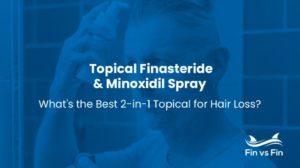
Topical Finasteride and Minoxidil Spray Review – What’s the Best 2-in-1 Topical for Hair Loss?
If you’ve been looking into treatment for pattern hair loss (androgenic alopecia), you may have come across the ingredients minoxidil and finasteride, which are the two most popular and clinically-backed treatments for thinning hair that come in both oral and topical form. Brands like Hims,

Tretinoin and Hair Loss: Does It Help Regrow Hair?
Key Takeaways Topical tretinoin may support hair growth by increasing circulation to the scalp and boosting cell turnover. Up-to-date clinical research indicates that tretinoin can enhance the effects of minoxidil for hair growth. The most common side effects of tretinoin are skin irritation, dryness, and
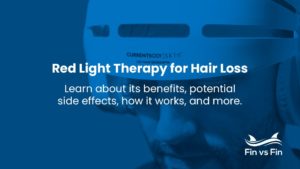
Red Light Therapy for Hair Loss: Does It Promote ReGrowth?
Key Takeaways Red light therapy can safely and effectively treat hair loss in some individuals. It typically takes four to six months to see results from red light therapy. Red light therapy can promote regrowth and hair retention. While many types of red light therapy

How to Get Oral Minoxidil Online: A Complete Guide
Key Takeaways Oral minoxidil is a good option for individuals with androgenic alopecia who experience side effects from topical minoxidil or who are not seeing the results they hoped for. You can get an oral minoxidil prescription online by completing a virtual consultation with a

Does High Blood Pressure Cause Hair Loss?
Key Takeaways While some studies do show a potential association between high blood pressure and hair loss, more research is still needed. High blood pressure can affect blood flow, potentially impacting blood flow to the scalp and hair follicles. Some medications used to treat high
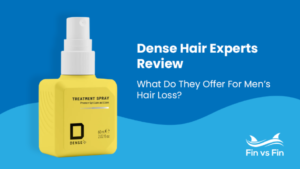
Dense Hair Experts Review: What Do They Offer for Men’s Hair Loss?
Dense Hair Experts Overview Price: £59.99 (or £47.99 on subscription) Prescription products: Finasteride, dutasteride OTC products: Minoxidil, shampoo, conditioner, vitamins, styling products Active ingredients: Finasteride, dutasteride, minoxidil Potential side effects: Itching, redness, flaking Who it’s best for: Individuals experiencing male pattern baldness Go to Site→




